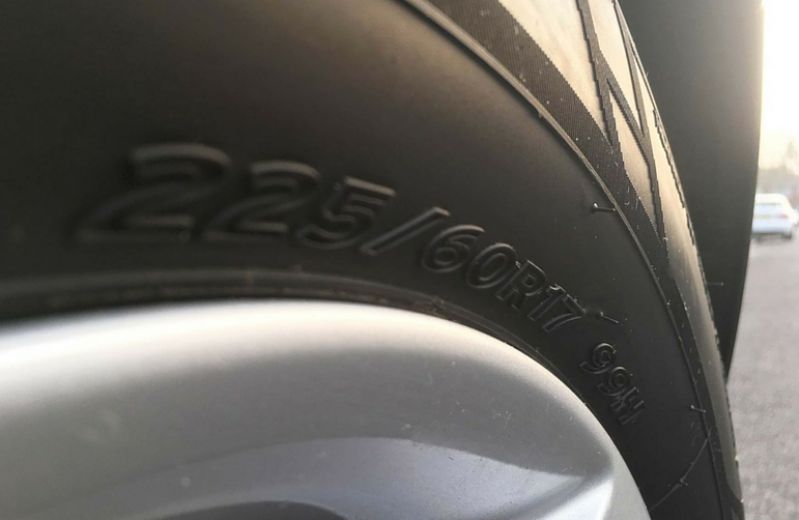Understanding Tire Speed Ratings: A Top 10 Guide
Explore the top 10 tire speed ratings explained in simple terms. Find out how they impact your driving experience.

If you've ever wondered what is tire speed rating and how it plays a role in your vehicle's performance, you're in the right place. Tire speed ratings might seem like a small detail, but they hold a significant impact on how your car handles on the road. From ensuring safety to enhancing your driving experience, understanding these ratings can make a big difference. Let's dive into the top 10 tire speed ratings and explain them in terms that are easy to grasp. By the end, you'll have a clearer view of why they matter and how to choose the right ones for your ride.
Understanding What is Tire Speed Rating
At its core, the tire speed rating signifies the maximum speed a tire can safely maintain over a specified period. It's not just about how fast you can go; it's about reliability, performance, and most importantly, safety. Ratings are determined through controlled tests that evaluate a tire's capability to handle speed and heat buildup, with each rating letter correlating to a specific top speed. This guide will break down the maze of letters and numbers into straightforward, actionable advice.
List of Top Choices
- The Significance of Tire Speed Ratings
- How Tire Speed Ratings Affect Your Driving
- Top 10 Tire Speed Ratings Explained
- Choosing the Right Tire Speed Rating for Your Vehicle
- Impact of Speed Ratings on Tire Wear and Performance
- Understanding Speed Rating Symbols
- The Role of Tire Speed Ratings in Safety
- Comparing Speed Ratings Across Different Tire Brands
- Future of Tire Speed Ratings: Innovation & Trends
- Frequently Asked Questions About Tire Speed Ratings
The Significance of Tire Speed Ratings

When we delve into what is tire speed rating, it’s about understanding the safety and performance threshold of your tires. Essentially, a tire's speed rating indicates the maximum speed at which the tire can carry a load under specified service conditions. This is crucial not only for performance enthusiasts but for anyone who prioritizes safety and optimal tire performance.
- Provides a benchmark for tire performance and safety.
- Helps car owners choose tires suitable for their vehicle’s top speed.
- Ensures compatibility with vehicle's speed capabilities.
A tire speed rating isn't just a random letter on the sidewall; it's a critical piece of information indicating how well your tire can handle high speeds. Whether you're cruising on the highway or pushing the limits on the track, knowing your tire's rating helps ensure that you're not asking more from your tires than they were designed to deliver.
How Tire Speed Ratings Affect Your Driving
Understanding what does speed rating mean on tires can significantly impact your driving experience. The speed rating affects how a tire dissipates heat, its traction, and overall performance at high speeds. A tire that matches your vehicle's speed rating ensures you’re getting the performance and safety your car was designed to deliver.
- Influences handling and stability at high speeds.
- Affects heat dissipation capabilities of the tire.
- Impacts tire wear and durability over time.
Choosing the right tire speed rating is more than a safety measure; it's about matching your driving habits and needs with the right tire technology. Whether you're navigating tight corners or accelerating on straightaways, understanding the role of tire speed ratings can enhance your driving experience, ensuring your tires can handle the heat and stress of your driving demands.
Top 10 Tire Speed Ratings Explained

Diving deeper into tire specifications, let’s explore what does 102h mean on a tire or what does 110t mean on a tire? Each combination of numbers and letters is a code that represents the tire’s load capacity and its speed rating. The number indicates the maximum load the tire can support, while the letter indicates the maximum speed at which the tire can carry a specified load safely.
- 102H - Can carry a load of 850 kg at speeds up to 210 km/h.
- 110T- Can carry a load of 1060 kg at speeds up to 190 km/h.
- Knowing what is load index on tires and what is speed rating enhances tire choice precision.
Understanding these ratings allows drivers to make informed decisions about tire purchases, ensuring they select tires that match their vehicle's load capacity and speed requirements. It's not just about the speed - it’s about safety, performance, and finding the perfect balance for your driving needs.
Understanding Speed Rating Symbols
When it comes to tire performance, what does the letter rating on tires mean is crucial. Each letter symbolizes a speed class, from N (lowest) to (Y) highest, providing insight into a tire's maximum capability.
- S & T: Common for all-season tires, indicating speeds up to 112 mph and 118 mph, respectively.
- H: Often found on family sedans and minivans, supporting speeds up to 130 mph.
- Understanding what does the H mean on a tire or what T rated tire means impacts both vehicle performance and safety.
In examining what does T or S mean on tires, it's clear these ratings accommodate the majority of everyday vehicles, ensuring a blend of durability, comfort, and speed. For performance-focused drivers, ratings like V, W, or Y offer higher speed capabilities, essential for sports cars and high-performance sedans.
The Role of Tire Speed Ratings in Safety
Tire speed ratings not only inform you about speed but also about the safety and performance they can deliver. An appropriate speed rating for your vehicle ensures that tires can handle high-speed driving without failing.
- Safety: Matching tire ratings with vehicle capabilities is vital for maintaining tire integrity at higher speeds.
- Performance: Higher speed ratings often mean better handling and braking performances.
- Peace of mind: Knowing what speed rating tire do I need brings confidence in your tire's ability to perform safely under speed and load conditions.
Ignoring tire speed ratings can lead to reduced tire life and even dangerous blowouts. Therefore, understanding what does the speed rating on tires mean is not just about maximizing speed—it’s fundamentally about ensuring safety on the road.
Choosing the Right Tire Speed Rating for Your Vehicle

When it comes to selecting the right tire speed rating, it's essential to consider both your vehicle's capabilities and your driving habits. Choosing a tire with a speed rating that matches or exceeds your vehicle's top speed ensures optimal performance and safety. Here’s how to make the right choice:
- Consult your vehicle’s owner manual to find the recommended tire speed rating.
- Consider your typical driving conditions - city driving might not require as high a speed rating as highway driving.
- Balance between durability and performance – higher speed ratings generally mean a softer tire compound that provides better grip but wears out faster.
Understanding the balance between speed rating and tire wear will help you make an informed choice that suits your needs and ensures your vehicle operates safely and efficiently.
Impact of Speed Ratings on Tire Wear and Performance
The speed rating of a tire can also impact its wear and overall performance. Higher speed ratings typically require a softer rubber compound for better grip and handling, which can lead to quicker wear. Conversely, tires with lower speed ratings often have harder compounds that wear slower but offer less flexibility and performance. Here are some key points:
- Higher rated tires may need more frequent replacements due to faster wear.
- Lower speed-rated tires might offer longer life but could lack the performance edge desired in certain driving conditions.
- Choosing a tire that appropriately matches the performance profile of your vehicle can prevent over-spending on unnecessary features.
Selecting the right speed rating affects long-term costs and how often you’ll need new tires, impacting overall vehicle maintenance budgets.
Comparing Speed Ratings Across Different Tire Brands
Different tire brands might offer similar speed ratings, but the performance and quality can vary significantly. When comparing tires across different brands:
- Look for reviews and performance tests to see how tires of the same speed rating stack up against one another.
- Consider the reputation of the brands and their commitment to quality and safety standards.
- Check for any additional technologies or features that enhance tire performance beyond just the speed rating, such as tread design or rubber compounds.
Understanding these factors can help you identify the best tires for your vehicle, ensuring that you get the most value out of your purchase.
Future of Tire Speed Ratings: Innovation & Trends

As vehicles continue to advance, so too do tire technologies. The future of tire speed ratings likely includes greater integration with vehicle electronics and advanced monitoring systems, such as:
- Smart tires equipped with sensors to provide real-time data on tire health and performance.
- Advancements in materials science leading to more durable, high-performance tires at higher speed ratings.
- Environmental considerations that influence tire construction to balance performance with eco-friendliness.
These innovations could redefine the importance of speed ratings, moving beyond just speed and load capabilities to a more holistic view of tire technology capable of providing safer, more efficient driving experiences.
Frequently Asked Questions About Tire Speed Ratings
To wrap up, let’s address some common queries about tire speed ratings:
- Can I use tires with a higher speed rating than recommended? Yes, but it may affect the comfort and mileage of your drive. It’s safe but not always necessary.
- Is it okay to mix tires with different speed ratings? For safety reasons, it is best to use tires with the same speed ratings. Mixing can result in uneven handling and wear.
- How often should I check my tire’s speed rating? It’s good practice to check tire specifications, including speed ratings, when replacing tires or purchasing a new vehicle.
With a better understanding of what tire speed ratings mean and how they impact your driving, you can make informed choices that enhance both your vehicle’s performance and your safety on the road.
What's Your Reaction?








































































